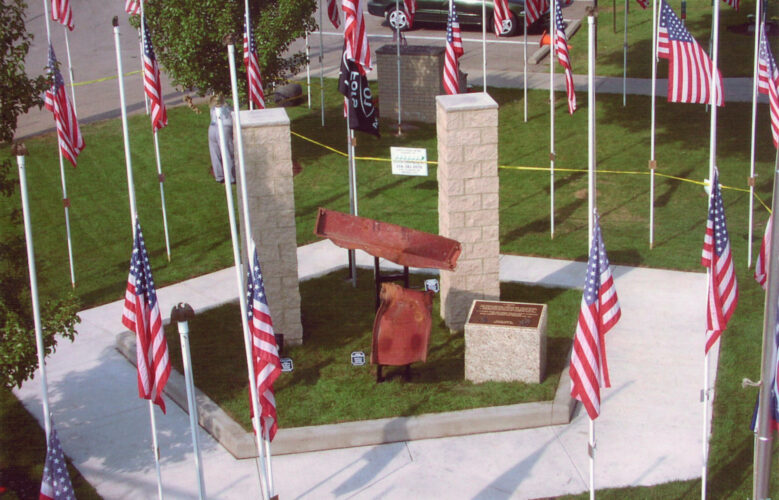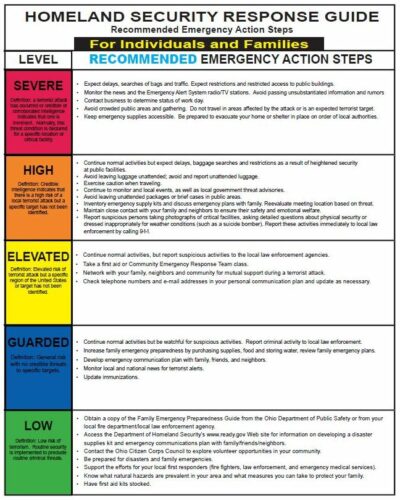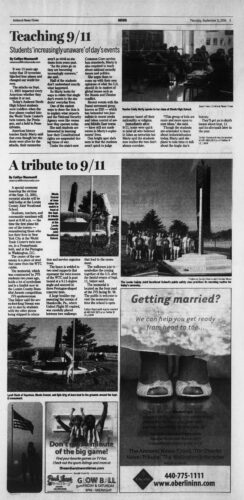Remembering 9/11 20 Years Later

There are events in our lives that are clear demarcations, events that change the world as we knew it, or believed it, to be. Twenty years ago, on September 11, 2001, four planes took off from airports on the east coast. None reached their destinations. Instead, two struck the Twin Towers in New York, one hit the Pentagon in Washington, D.C., and the fourth crash-landed in a field in Pennsylvania. Life would never be the same again.
So here’s the thing about history: although we may not realize it, we’re always living it. Where 9/11 was concerned, we knew. We saw the tragedy, the heroism, the monumental loss and, when we had a moment to breathe, we knew that this was something that we would never forget. And this brings me to the other thing about history: the moments we live through can be the most difficult to talk about. 9/11 is a case in point. To pass by this anniversary without acknowledging the unspeakable tragedy of that day is unthinkable. To talk about it, however, remains painful, even twenty years later. In fact, this is undoubtedly the most difficult post I’ve written in the years I’ve been contributing to the Ohio Memory blog. It just…hurts. When historians study the past, they attempt to do so without judgment or emotion. It serves them well, and it serves us well when we write for Ohio Memory. This time, however, it’s a little harder. I hope you’ll understand and grant me a little leeway.

The terrorist attacks on September 11, 2001, occurred in three distinct geographic locations, but the tragedy belonged then, and belongs now, to the nation. In Ohio, Governor Bob Taft echoed President Franklin Delano Roosevelt when he called 9/11 “a day that would live in infamy,” and spoke our collective truth when he talked of grieving for our state, our nation, and for the fact that “we live in a world that is capable of such inhumane acts.” We didn’t watch the destruction in our own neighborhood, but it all happened in the place we call “home.”
Regardless of where we lived at the time, we experienced a swift and life-changing response to 9/11. Over 200,000 Americans enlisted in the military, with more than 70% of them selecting active duty. Ohio’s Red Cross traveled to attack sites to assist survivors and provide relief, as did first responders from around the state. You can watch and listen to the first-person accounts of a number of them on Ohio Memory (a transcript is attached to each video). You’ll also find oral histories from members of a team of forensic dentists and orthodontists who helped identify victims of the attacks.

Life changed irrevocably for those of us at home, too, in the days following the September 11 attacks. Each day was color-coded, from “green” — we were probably safe — to “red,” which meant a terrorist attack either had happened or was imminent. These Homeland Security Response Guides, published by the State of Ohio Security Task Force for homes, businesses and schools, reminded us to be alert at all times, even on “green” days, and functioned as a constant reminder that we were not, and would never be, what we were before. Opening mail became fraught when, just days after the September 11 attacks, anthrax was found in letters delivered by the U.S. Postal Service. And anyone traveling by air found themselves running a gauntlet of new regulations and security procedures, from removing our shoes to limiting the amount of liquid we could carry onto the plane…measures that, today, are still in place.
For over 2,000 families, 9/11 was more than flight regulations and color codes; it was unspeakable devastation and heartbreak and loss. But it was also strength and resilience. It was the approximately 100 babies born to 9/11 widows, proving that life could move forward with joy and hope. It was the entire world rallying around the U.S., and it was the unity we all felt as Americans. Twenty years later, remembering 9/11 means remembering a time when we all believed that, in the face of evil, we could find a common good and sense of understanding.
Where were you on 9/11? Do you have a story you would like to share? Do you have a friend or loved one who you would like us to remember? Tell us in the comments. Let’s all unite once more in memory of the 2,977 people who lost their lives that day.
Thank you to Shannon Kupfer-Trausch, Digital Initiatives Librarian at the State Library of Ohio, for this week’s post!



Leave a Reply
You must be logged in to post a comment.